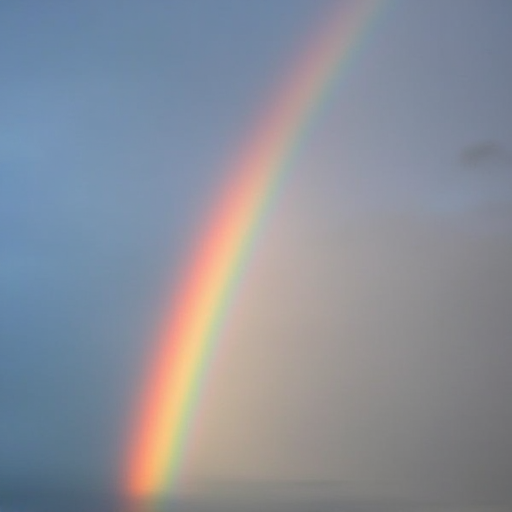
Why Are Rainbows Multicolored?
Rainbows are one of nature's most mesmerizing and magical phenomena. They appear as arcs of vibrant colors suspended in the sky, often after a rain shower, captivating our imagination and inspiring a sense of wonder. But what exactly causes a rainbow to be multicolored? To understand this, we must delve into the science of light and optics.
The Science of Light and Optics
The Composition of Light
The multicolored nature of rainbows stems from the fundamental properties of light. Sunlight, which appears white to the human eye, is actually composed of a spectrum of colors. This spectrum includes all the colors visible to humans: red, orange, yellow, green, blue, indigo, and violet, commonly remembered by the acronym ROYGBIV.
The Role of Water Droplets
Rainbows are formed when sunlight interacts with water droplets in the atmosphere. After a rain shower, countless tiny water droplets remain suspended in the air, creating the perfect condition for rainbows to form. These droplets act like miniature prisms, which are crucial for the creation of a rainbow.
Refraction, Reflection, and Dispersion
The formation of a rainbow involves three key optical processes: refraction, reflection, and dispersion.
-
Refraction: When sunlight enters a water droplet, it slows down and bends due to the change in medium from air to water. This bending of light is called refraction. The amount by which light bends depends on its wavelength, leading to different colors bending by different amounts.
-
Reflection: Once inside the droplet, light reflects off the inner surface of the droplet. This internal reflection is what redirects the light back towards the direction it came from.
-
Dispersion: As light exits the droplet, it undergoes a second refraction. Because each color of light bends at a slightly different angle, the light is dispersed into its component colors, creating a spectrum. This dispersion is what separates the colors and displays them as a rainbow.
The Shape and Order of Colors
The Circular Arc
The rainbow appears as a circular arc, but in reality, it is a full circle. The ground typically obstructs the lower half, preventing us from seeing the full circle. The center of this circle is located at the antisolar point, which is directly opposite the sun from the observer's perspective.
The Sequence of Colors
The order of colors in a rainbow is determined by the dispersion of light. Red, having the longest wavelength, is refracted the least and appears on the outer edge of the rainbow. Conversely, violet, with the shortest wavelength, is refracted the most and appears on the inner edge. This sequence creates the familiar ROYGBIV order.
Variations and Double Rainbows
Double Rainbows
Sometimes, a double rainbow can be observed. This phenomenon occurs when light is reflected twice inside the water droplet. The second rainbow appears outside the first and has its colors in reverse order. The space between the two rainbows is known as Alexander's band, which is noticeably darker than the surrounding sky.
Supernumerary Rainbows
Occasionally, faint, additional rainbows can appear just inside the primary rainbow. These are called supernumerary rainbows and are caused by the interference of light waves. They appear as closely spaced, pastel-colored bands and are more common in smaller water droplets.
Cultural and Symbolic Significance
Throughout history, rainbows have held cultural and symbolic significance in various societies. In many cultures, rainbows are seen as bridges or connections between the earthly and divine realms. They are often associated with hope, promise, and renewal, as illustrated by the biblical story of Noah's Ark, where the rainbow symbolizes God's promise not to flood the Earth again.
Conclusion
Rainbows are a testament to the intricate and beautiful interplay of light and water in our natural world. Their multicolored appearance is a result of the fundamental properties of light interacting with water droplets, through refraction, reflection, and dispersion. Understanding the science behind rainbows not only enhances our appreciation of their beauty but also deepens our connection to the natural phenomena that surround us. Whether seen as a scientific marvel or a symbol of hope, rainbows continue to inspire awe and wonder across cultures and generations.
